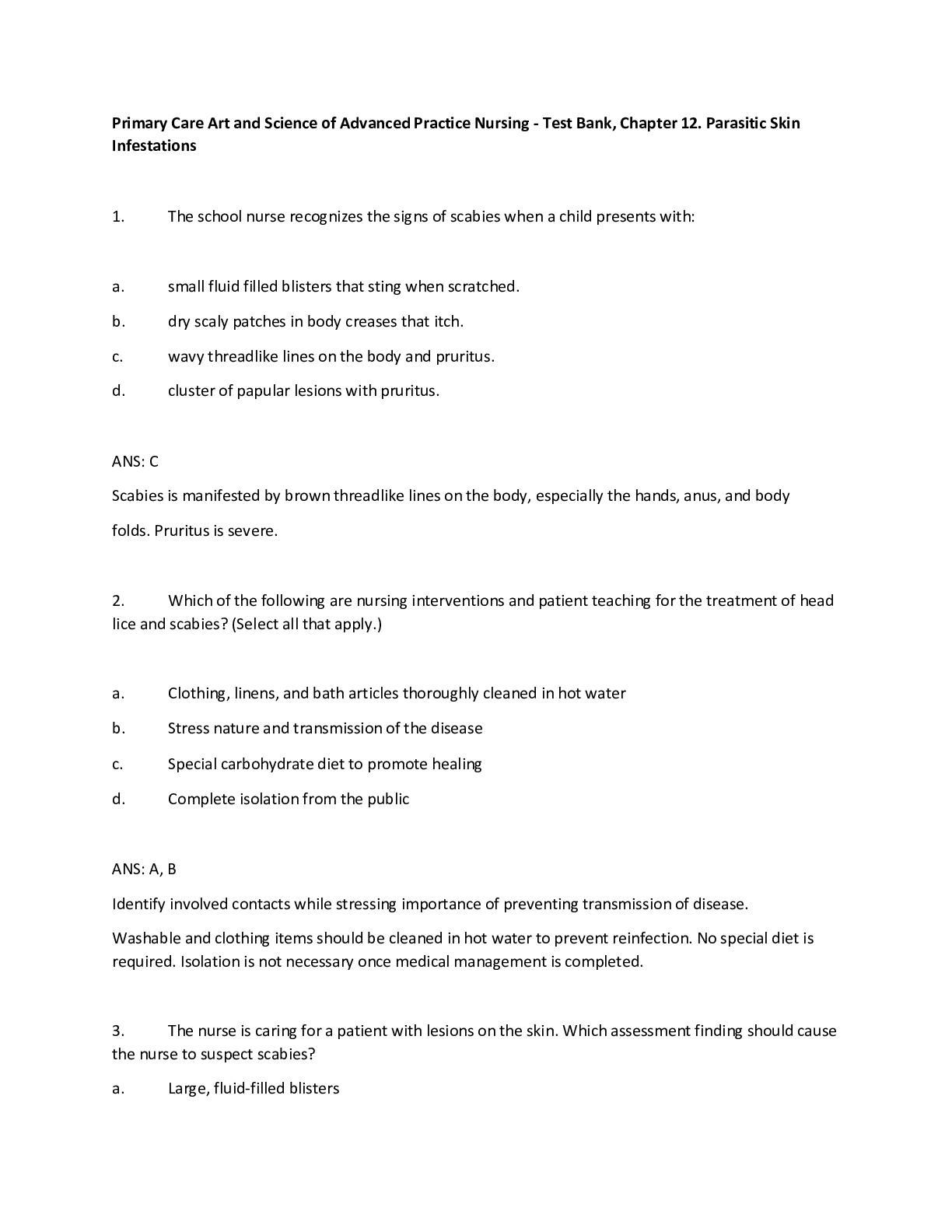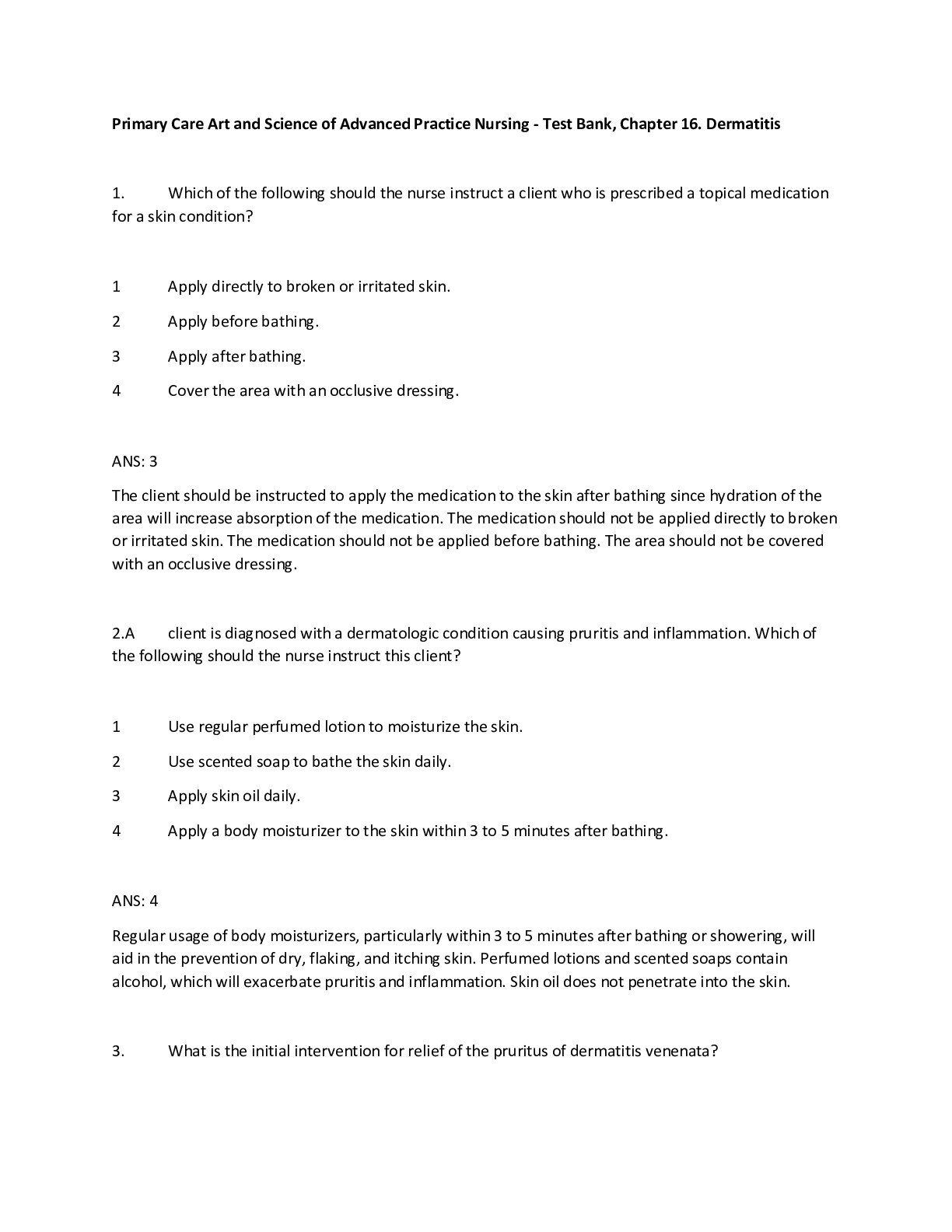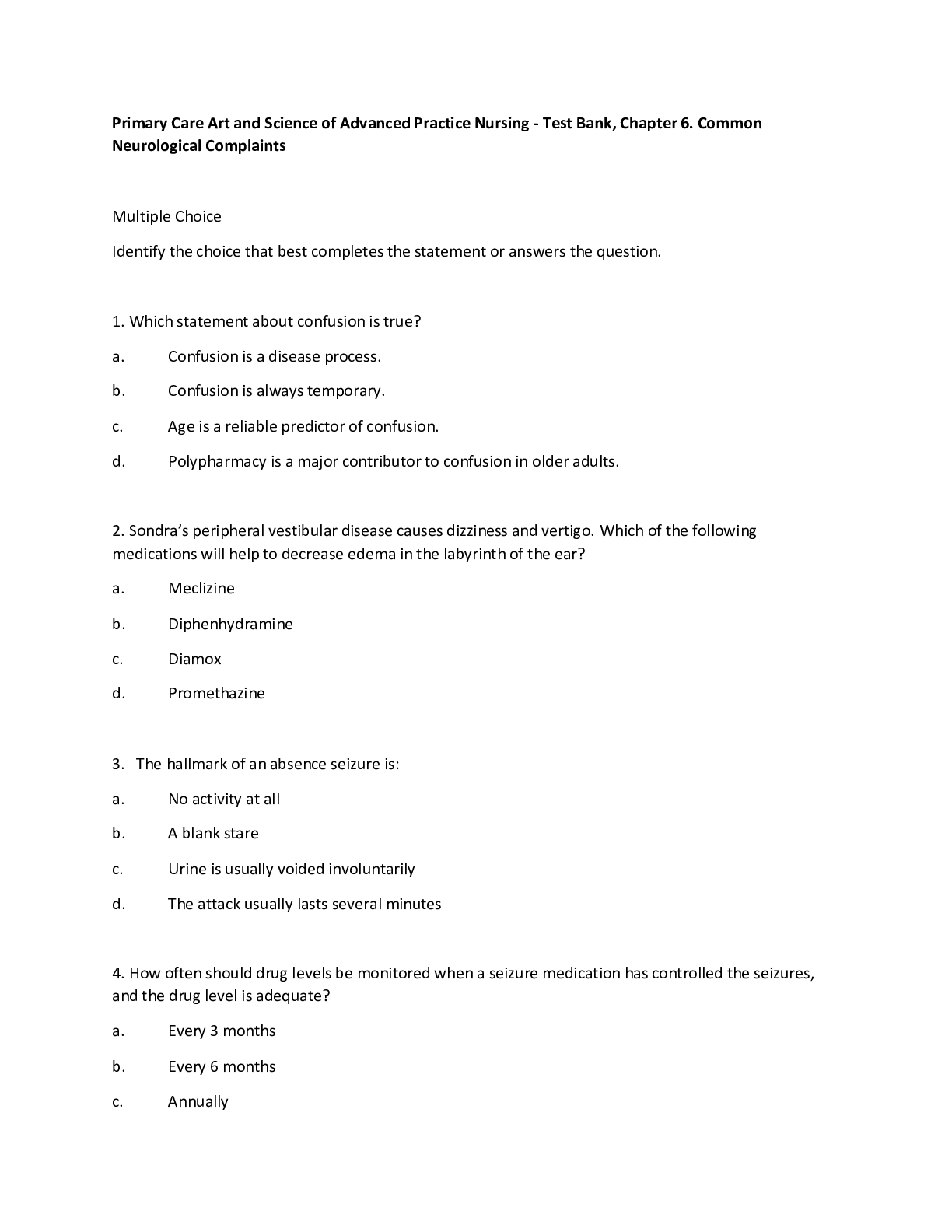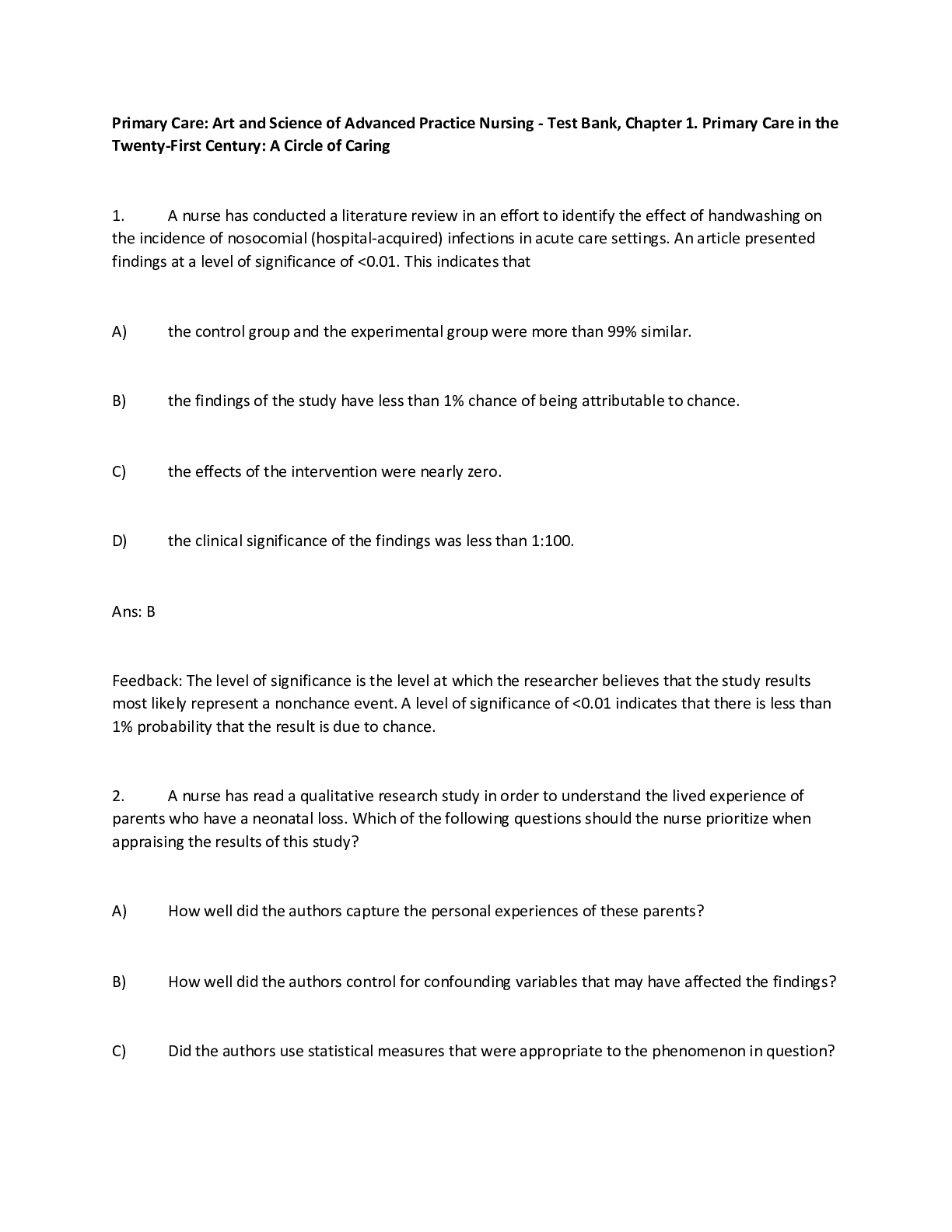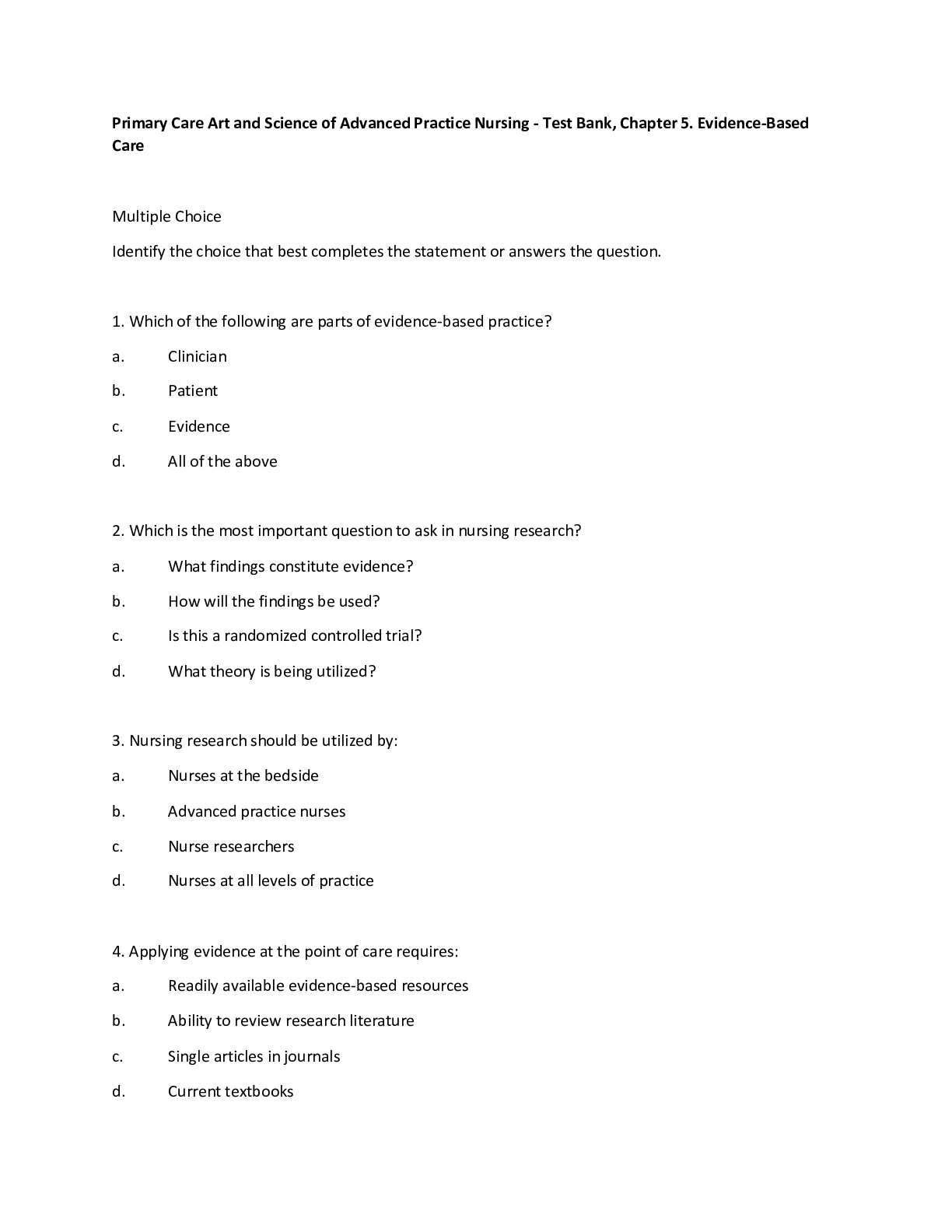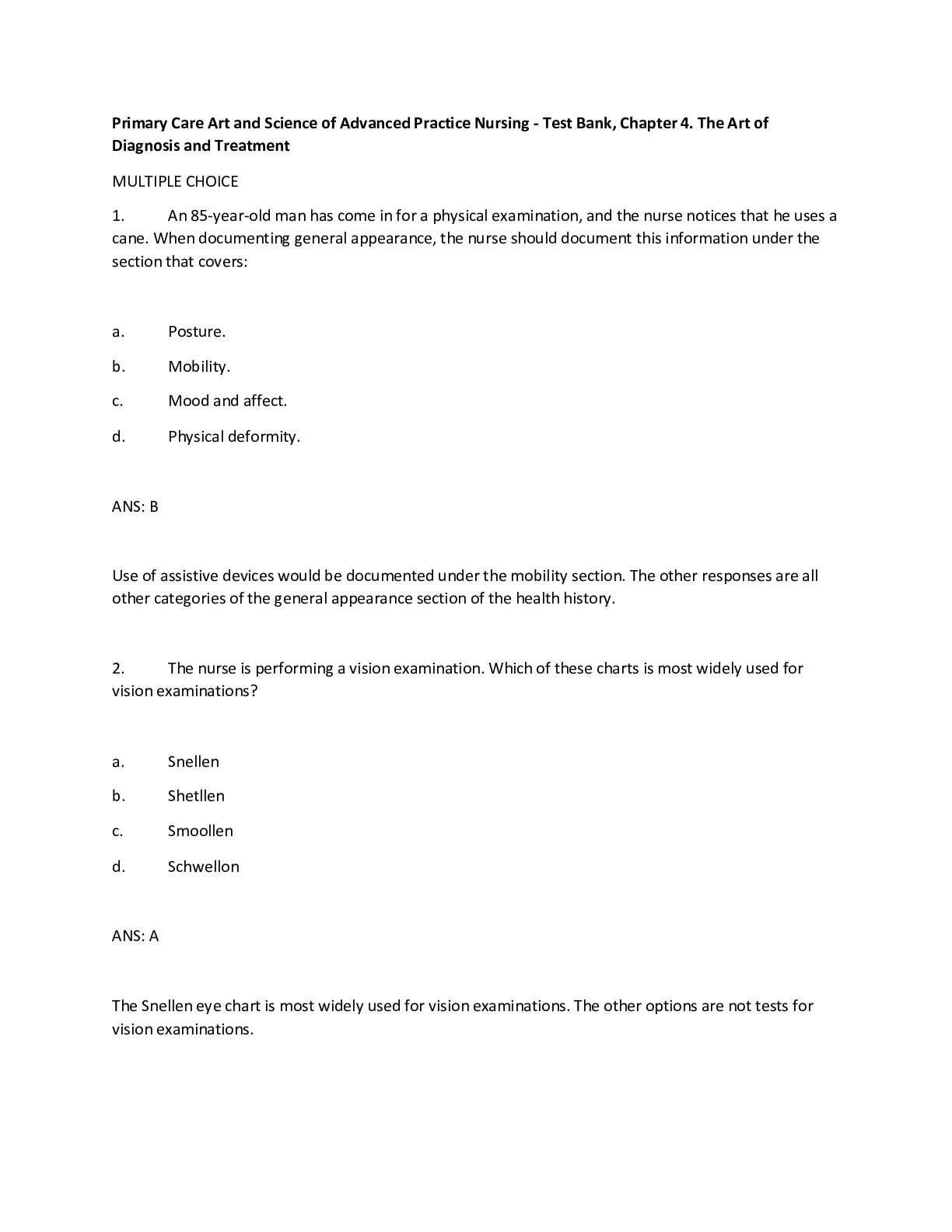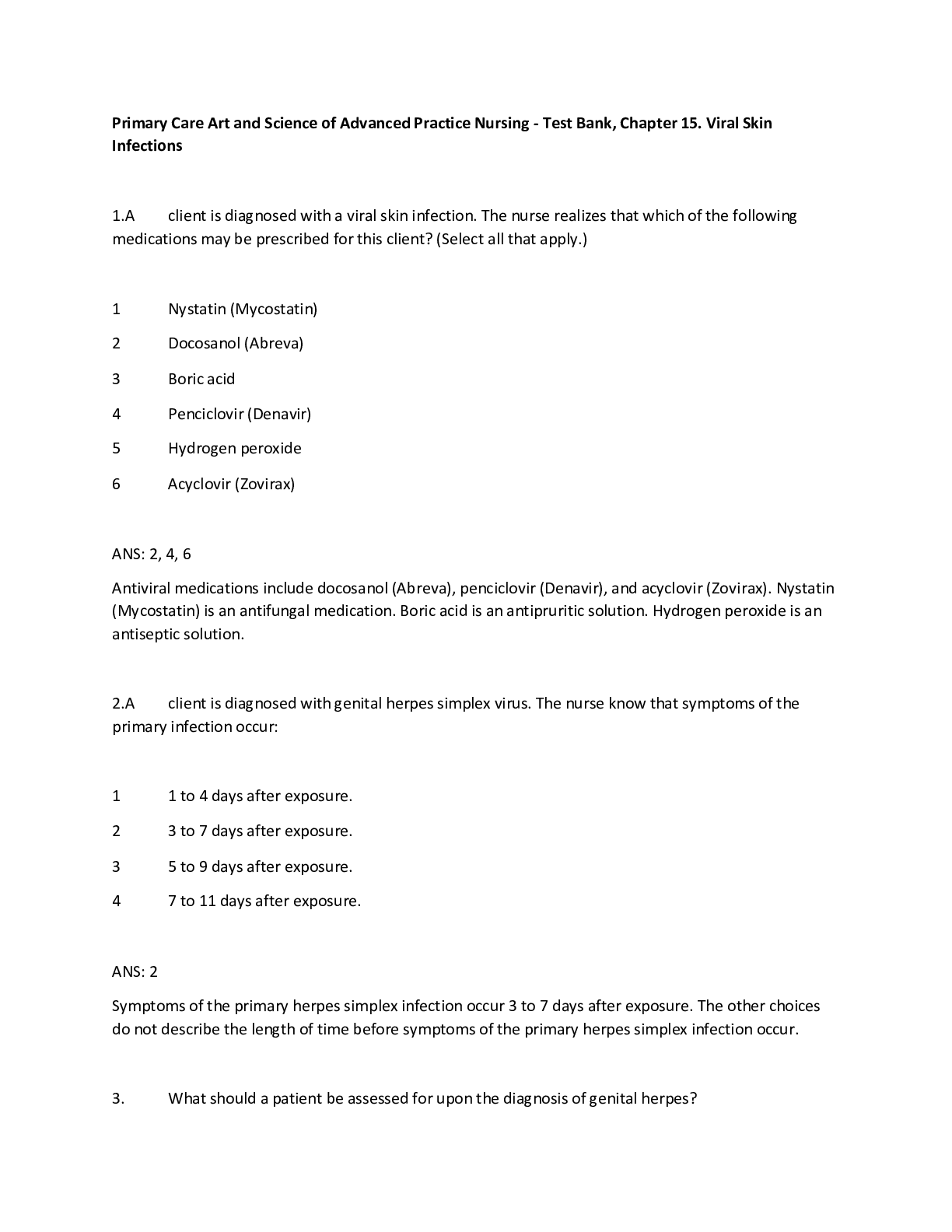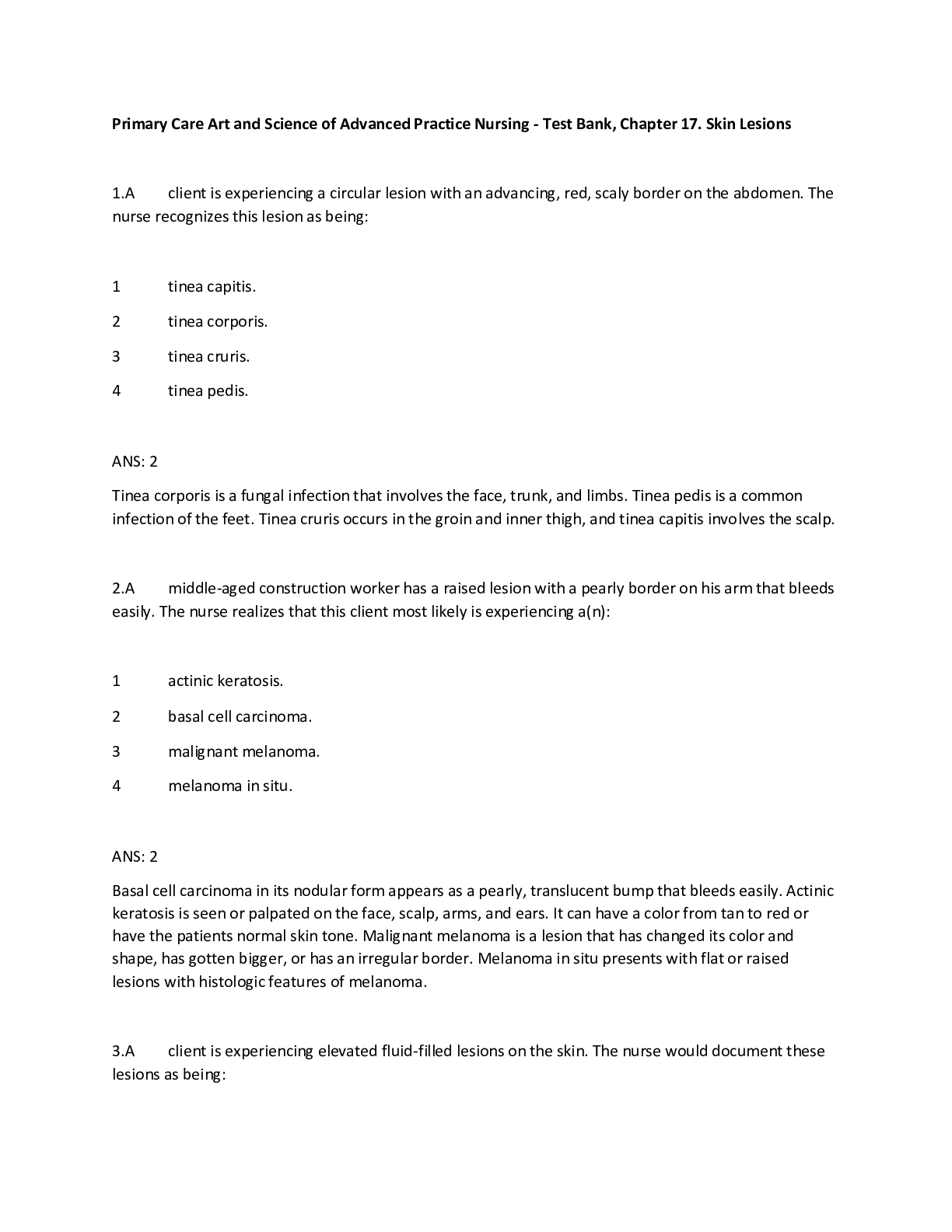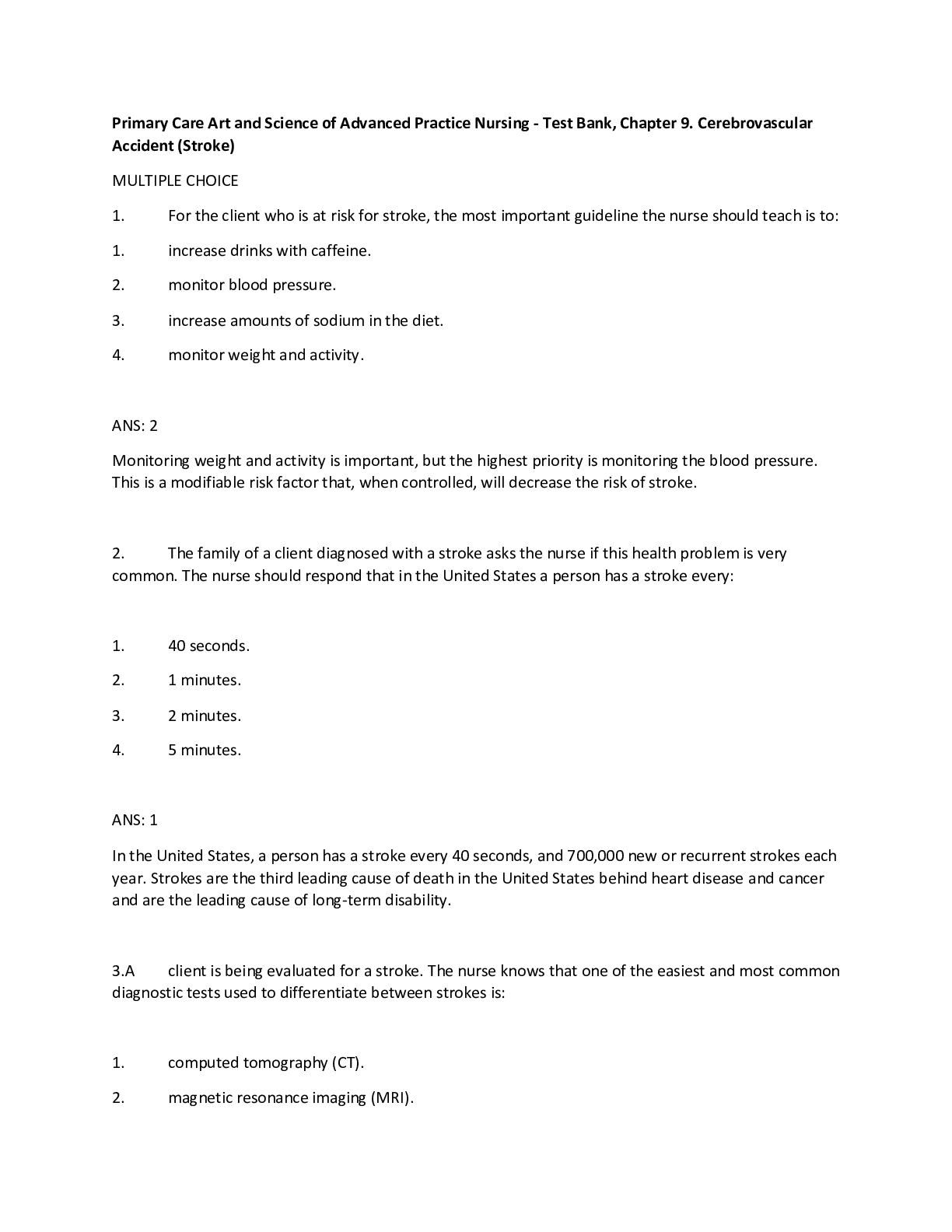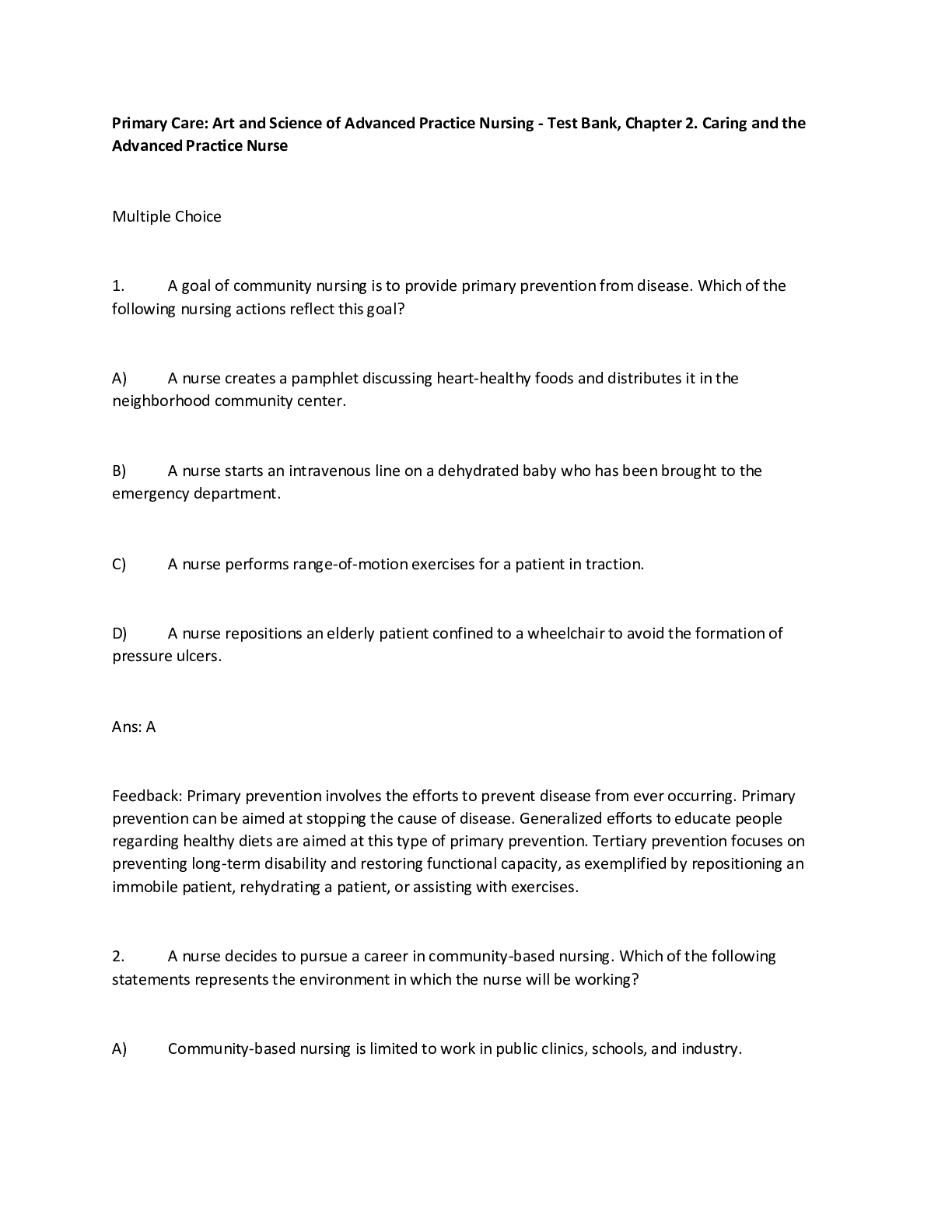*NURSING > QUESTIONS & ANSWERS > Lower GI - Test Bank complete solution questions and answers solution 2020 Chapter 43: Nursing Mana (All)
Lower GI - Test Bank complete solution questions and answers solution 2020 Chapter 43: Nursing Management: Lower Gastrointestinal Problems Test Bank
Document Content and Description Below
Lower GI - Test Bank complete solution questions and answers solution 2020 Chapter 43: Nursing Management: Lower Gastrointestinal Problems Test Bank MULTIPLE CHOICE 1. A patient who is hospi... talized with watery, incontinent diarrhea is diagnosed with Clostridium difficile. Which action will the nurse include in the plan of care? a. Order a diet with no dairy products for the patient. b. Place the patient in a private room with contact isolation. c. Teach the patient about why antibiotics are not being used. d. Educate the patient about proper food handling and storage. ANS: B Because C. difficile is highly contagious, the patient should be placed in a private room and contact precautions should be used. There is no need to restrict dairy products for this type of diarrhea. Metronidazole (Flagyl) is frequently used to treat C. difficile. Improper food handling and storage do not cause C. difficile. 2. A 67-year-old patient tells the nurse, “I have problems with constipation now that I am older, so I use a suppository every morning.” Which action should the nurse take first? a. Encourage the patient to increase oral fluid intake. b. Inform the patient that a daily bowel movement is unnecessary. c. Assess the patient about individual risk factors for constipation. d. Suggest that the patient increase dietary intake of high-fiber foods. ANS: C The nurse’s initial action should be further assessment of the patient for risk factors for constipation and for usual bowel pattern. The other actions may be appropriate but will be based on the assessment. 3. In teaching a patient who has chronic constipation about the use of psyllium (Metamucil), which information will the nurse include? a. Absorption of fat-soluble vitamins may be reduced by fiber-containing laxatives. b. Dietary sources of fiber should be eliminated to prevent excessive gas formation. c. Use of this type of laxative to prevent constipation does not cause adverse effects. d. Large amounts of fluid should be taken to prevent impaction or bowel obstruction. ANS: D A high fluid intake is needed when patients are using bulk-forming laxatives to avoid worsening constipation. Although bulk-forming laxatives are generally safe, the nurse should emphasize the possibility of constipation or obstipation if inadequate fluid intake occurs. Although increased gas formation is likely to occur with increased dietary fiber, the patient should gradually increase dietary fiber and eventually may not need the psyllium. Fat-soluble vitamin absorption is blocked by stool softeners and lubricants, not by bulk-forming laxatives. 4. The nurse is obtaining a history for a 23-year-old woman who is being evaluated for acute lower abdominal pain and vomiting. Which question will be most useful in determining the cause of the patient’s symptoms? a. “Is it possible that you are pregnant?” b. “Can you tell me more about the pain?” c. “What type of foods do you usually eat?” d. “What is your usual elimination pattern?” ANS: B A complete description of the pain provides clues about the cause of the problem. The usual diet and elimination patterns are less helpful in determining the reason for the patient’s symptoms. Although the nurse should ask whether the patient is pregnant to determine whether the patient might have an ectopic pregnancy and before any radiology studies are done, this information is not the most useful in determining the cause of the pain. 5. Two days after an exploratory laparotomy with a resection of a short segment of small bowel, a patient complains of gas pains and abdominal distention. Which nursing action is best to take at this time? a. Give a return-flow enema. b. Assist the patient to ambulate. c. Administer the ordered IV morphine sulfate. d. Insert the ordered promethazine (Phenergan) suppository. ANS: B Ambulation will improve peristalsis and help the patient eliminate flatus and reduce gas pain. Morphine will further reduce peristalsis. A return-flow enema may decrease the patient’s symptoms, but ambulation is less invasive and should be tried first. Promethazine (Phenergan) is used as an antiemetic rather than to decrease gas pains or distention. [Show More]
Last updated: 1 year ago
Preview 1 out of 19 pages

Reviews( 0 )
Document information
Connected school, study & course
About the document
Uploaded On
Mar 25, 2023
Number of pages
19
Written in
Additional information
This document has been written for:
Uploaded
Mar 25, 2023
Downloads
0
Views
26

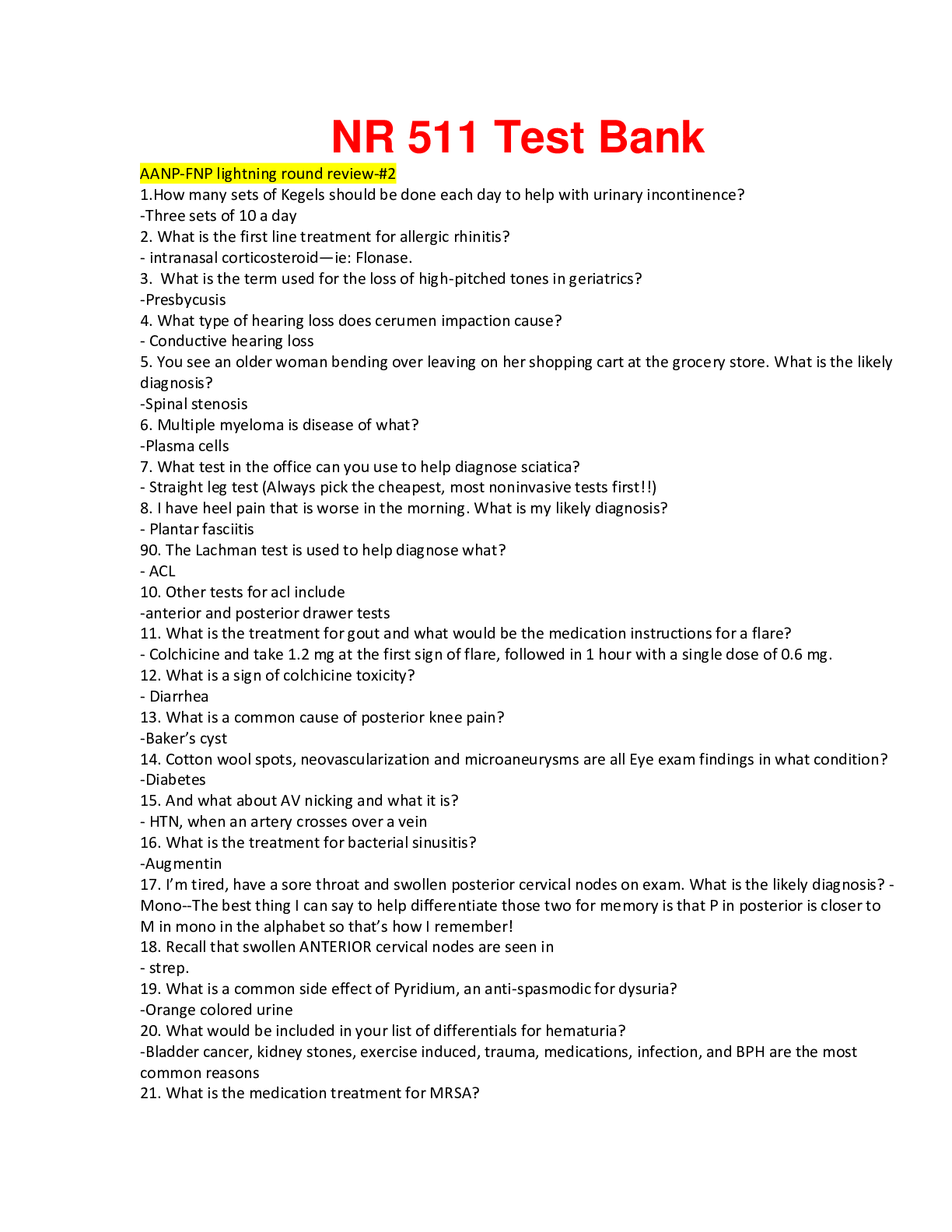
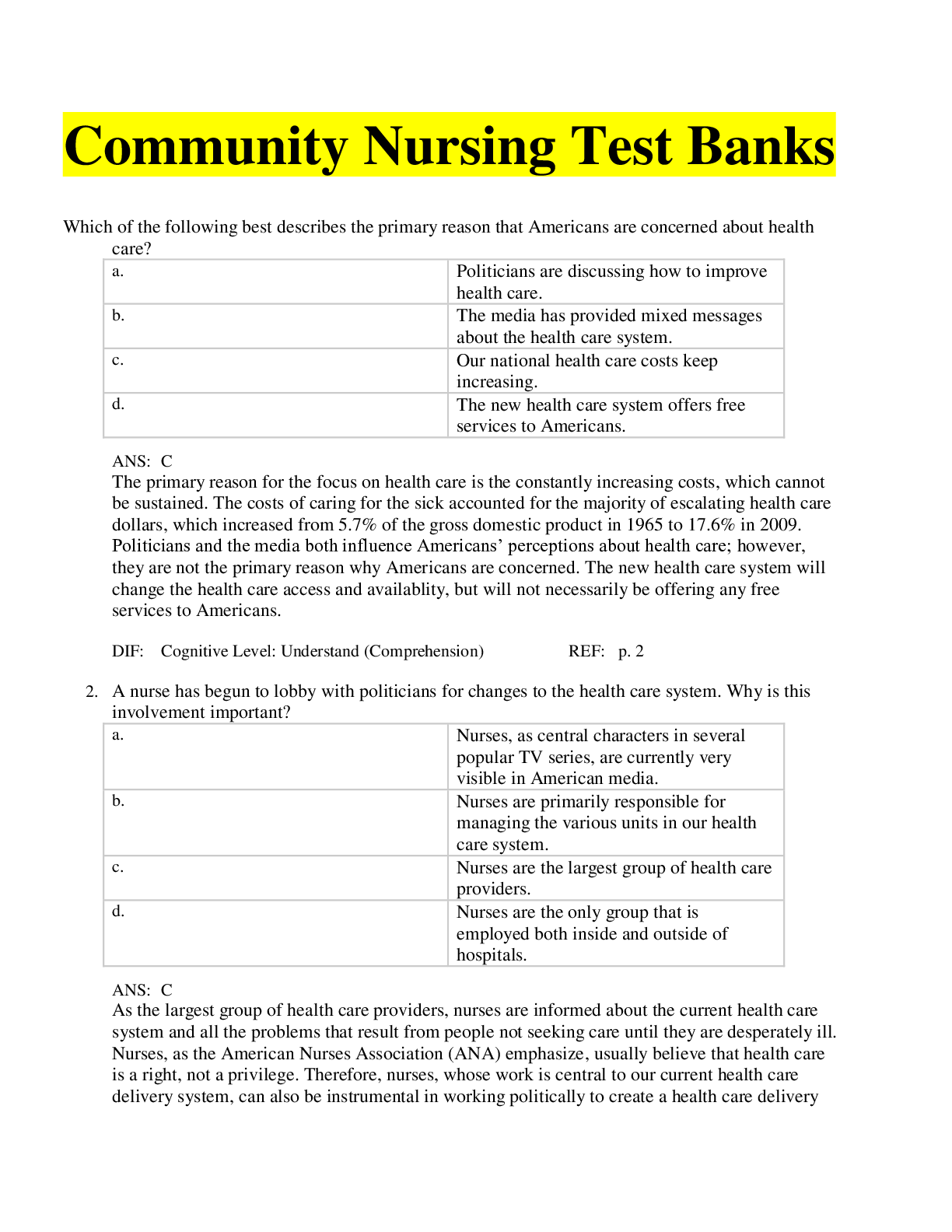
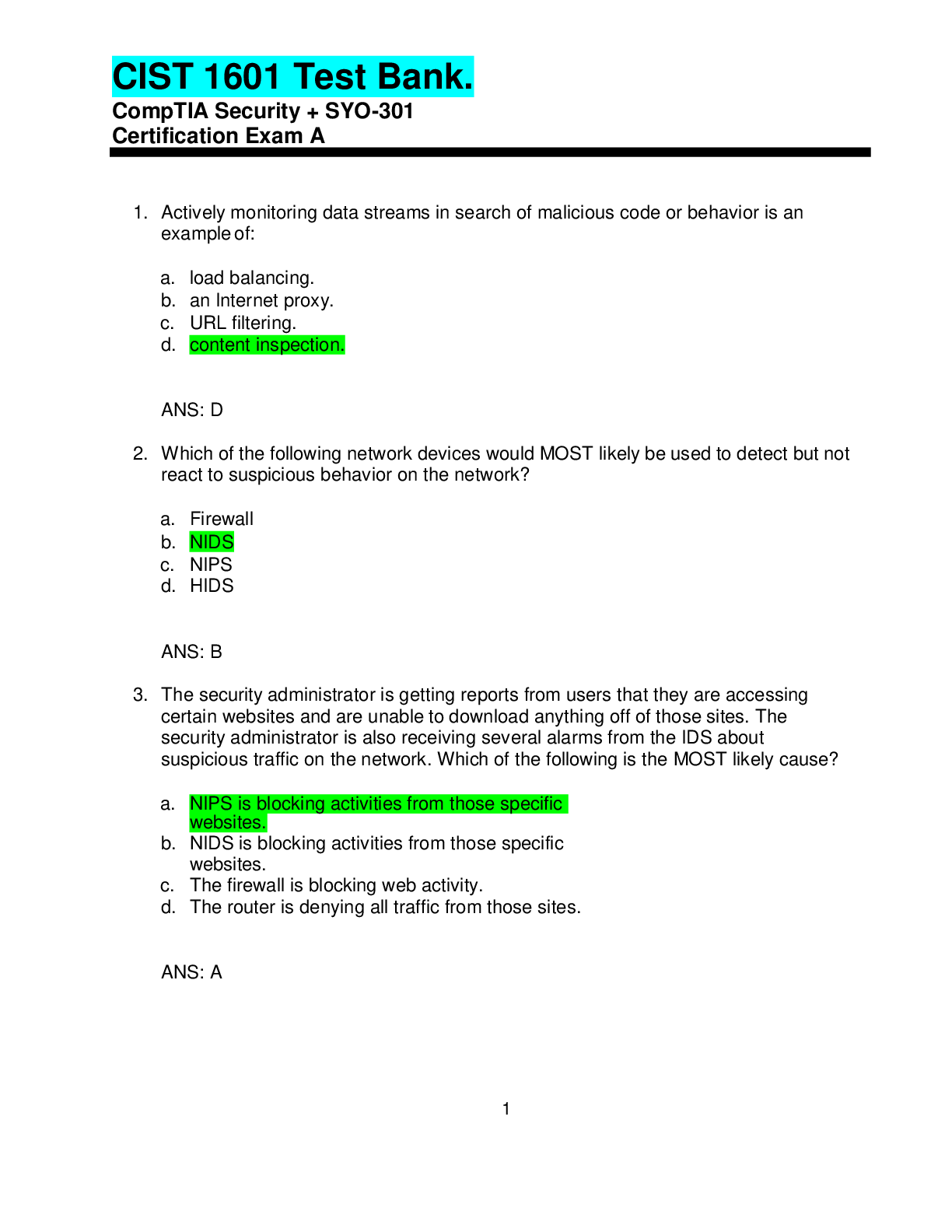
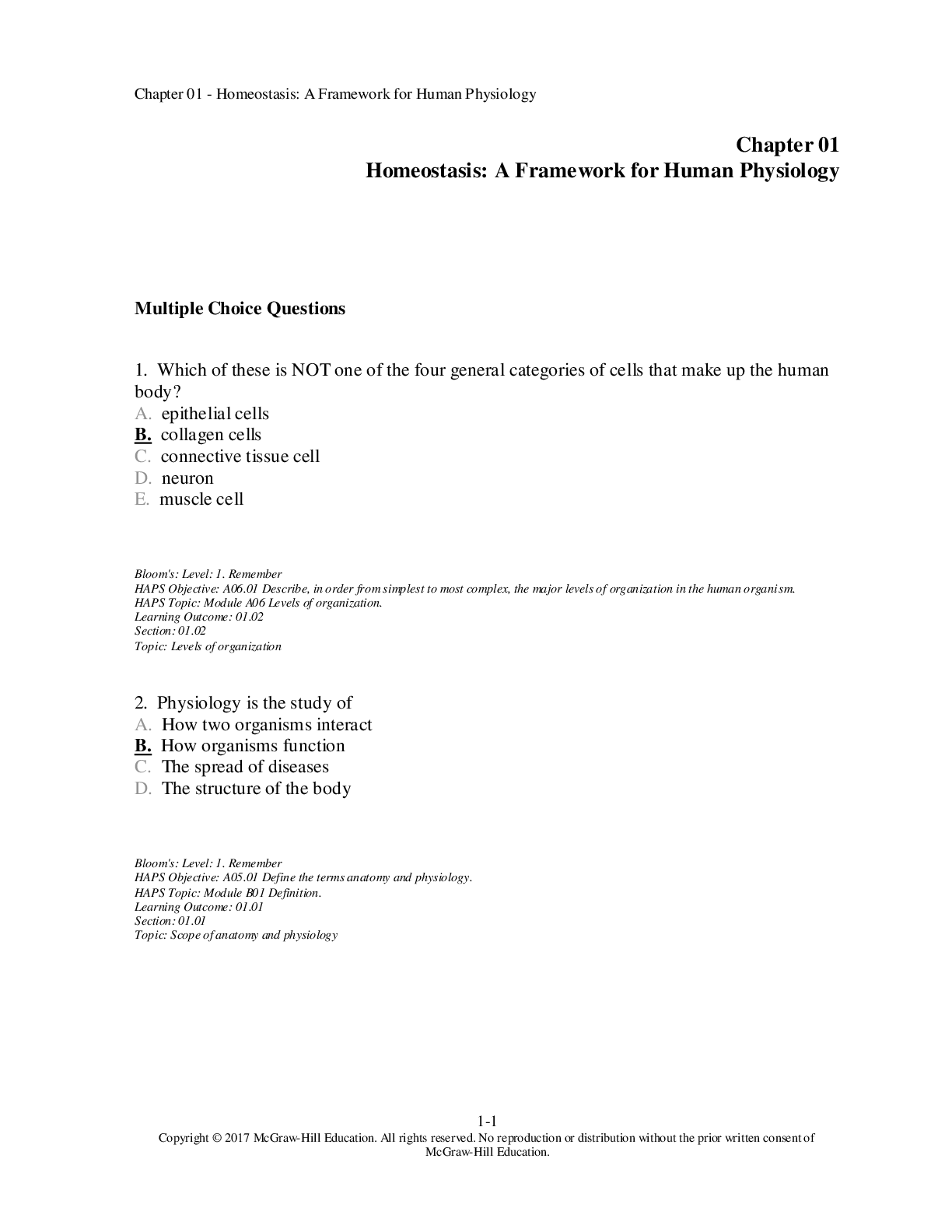



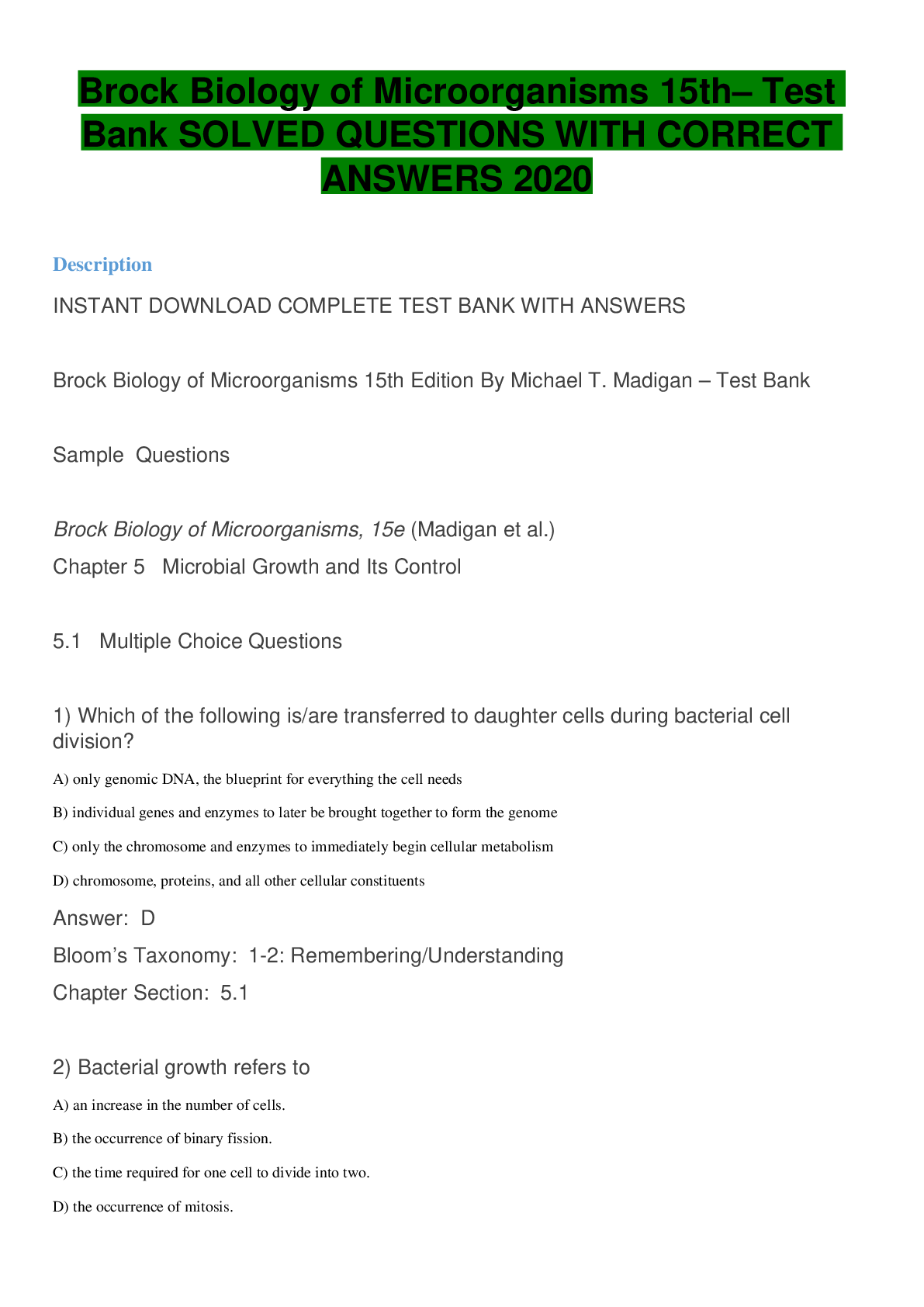







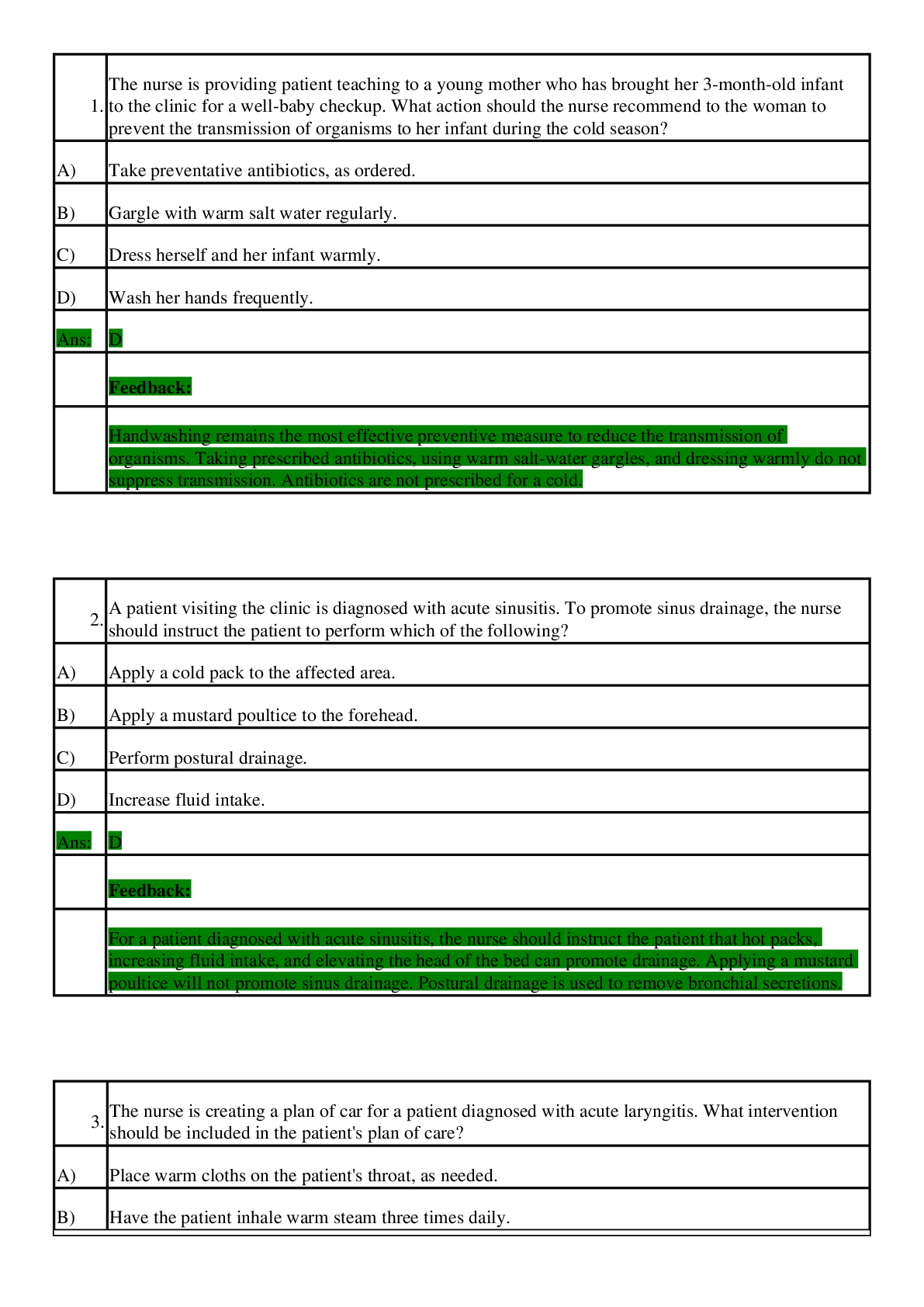
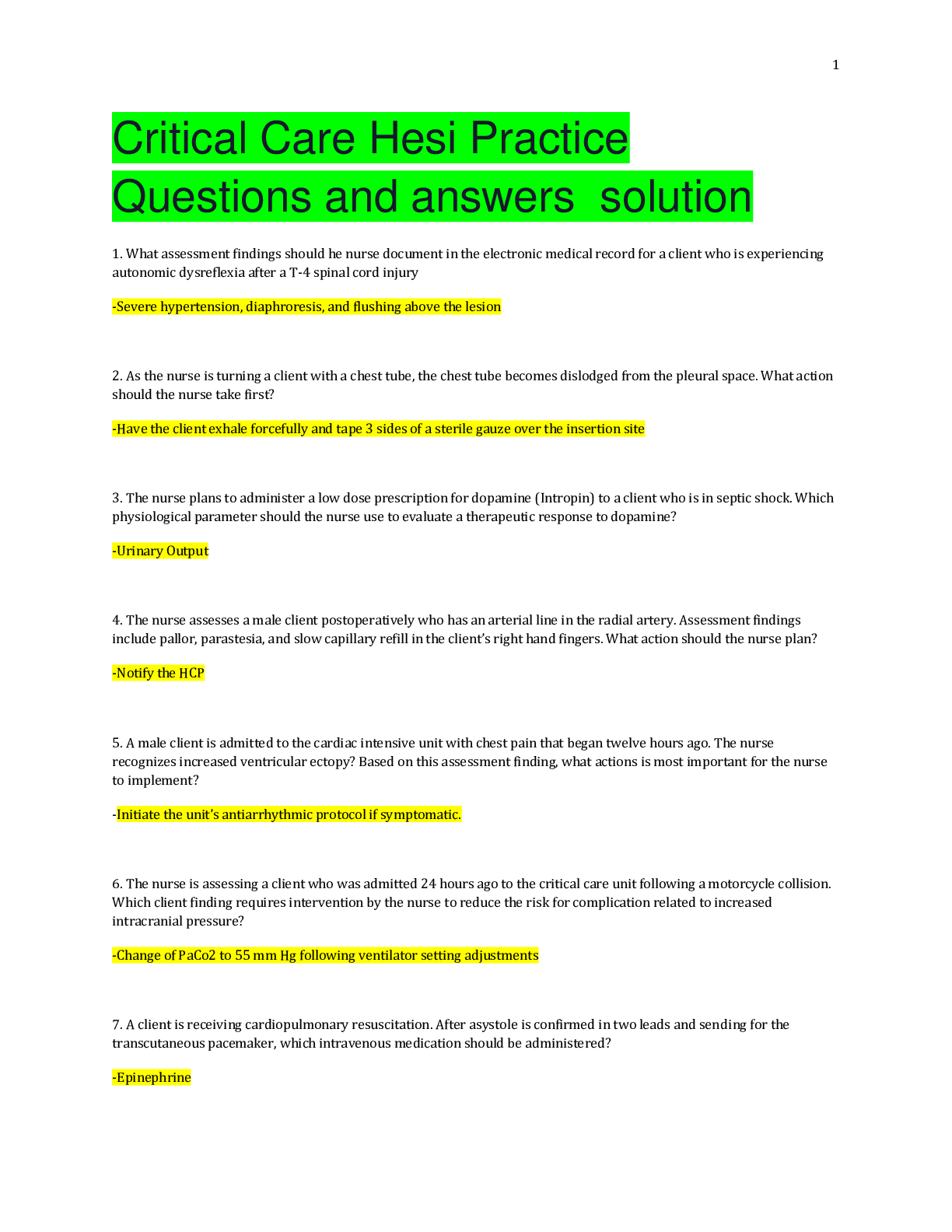

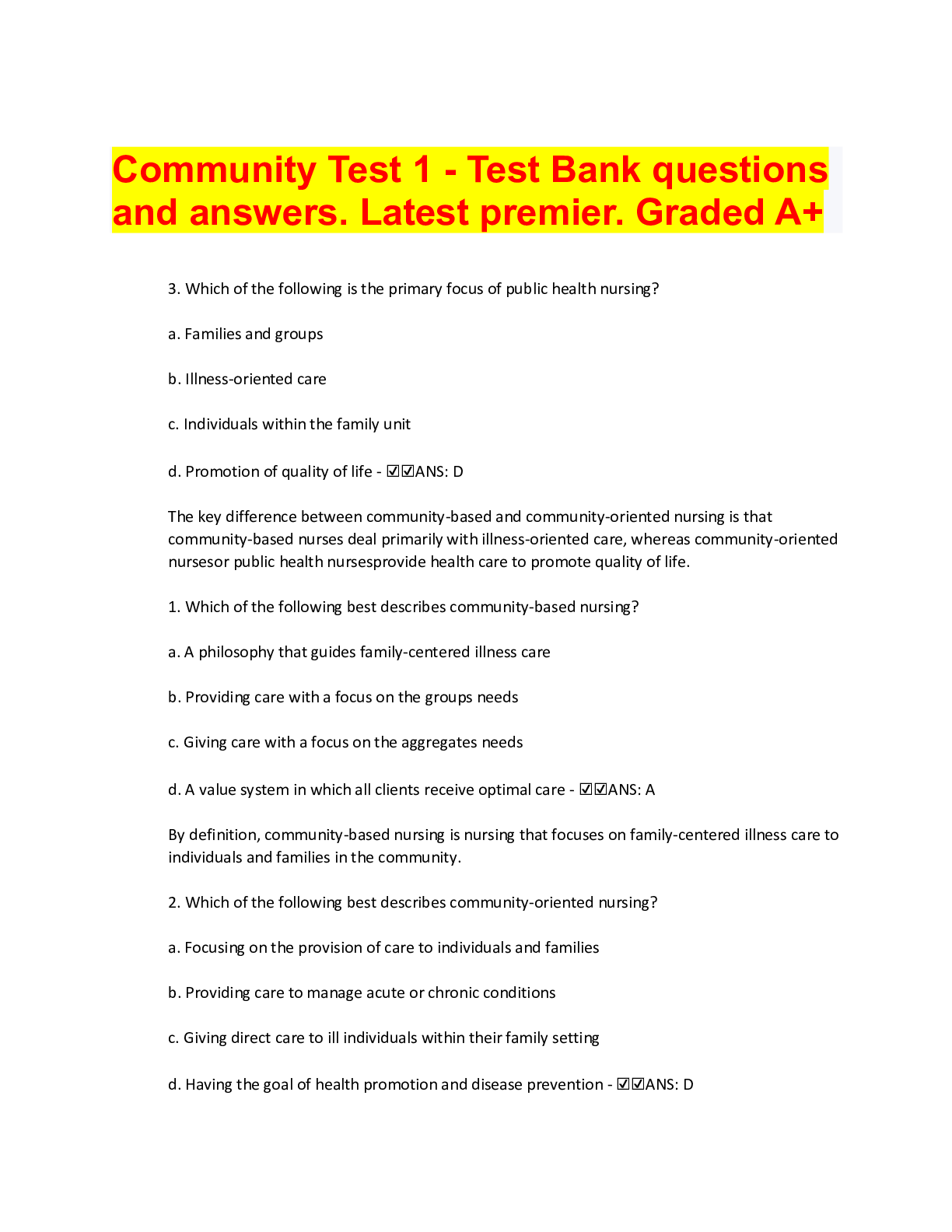
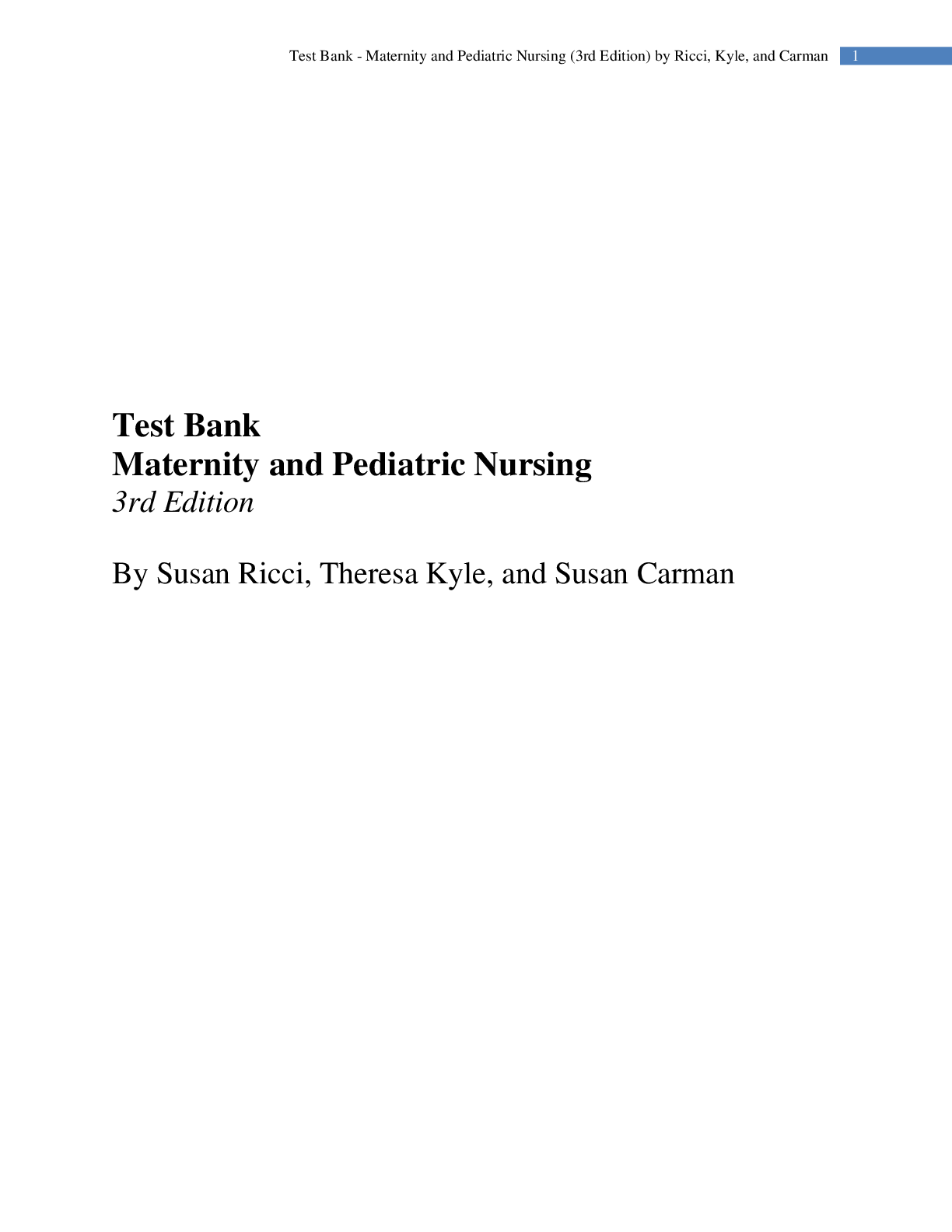
 EXAM FOR ACSM CPT CERTIFICATION REVIEW QUESTIONS AND ANSWERS SOLUTION.png)

